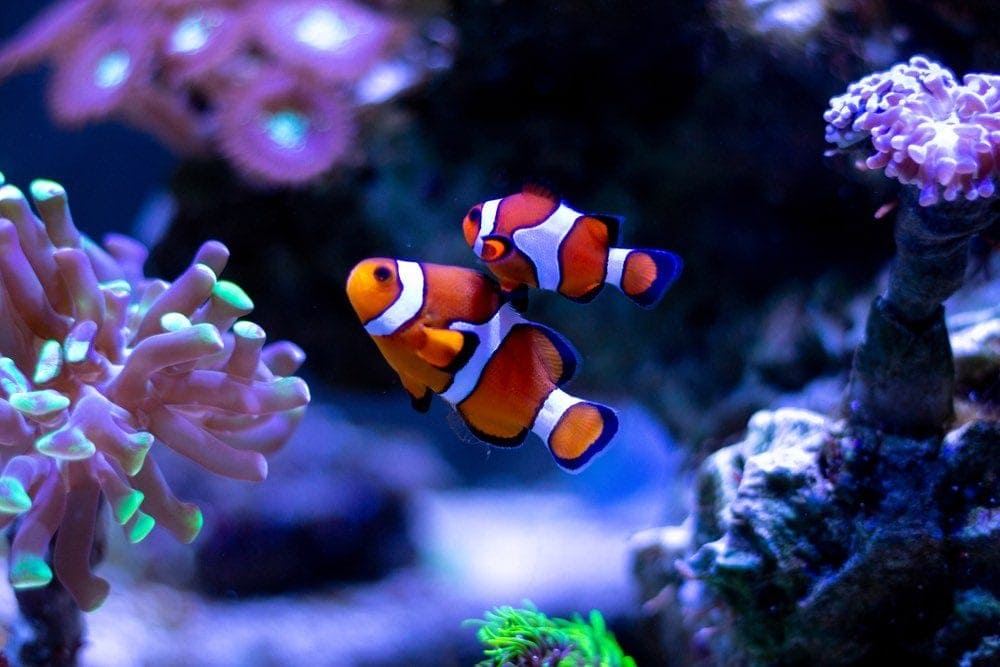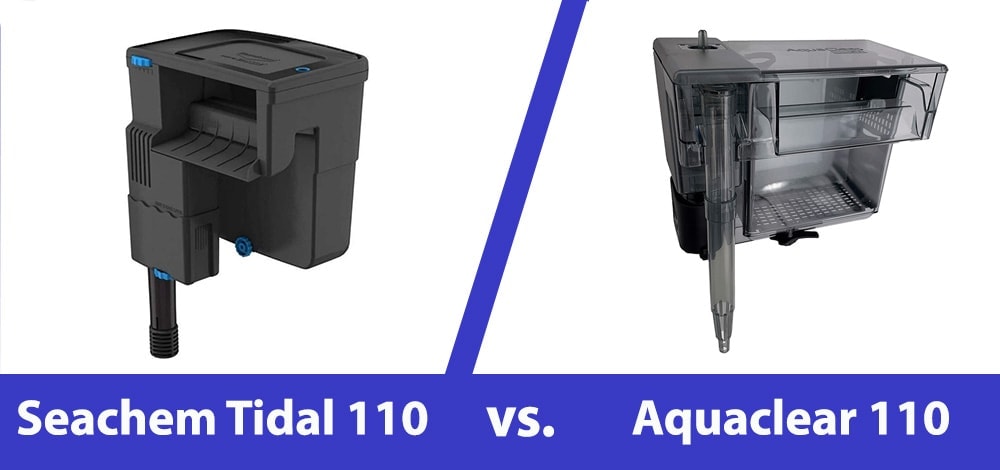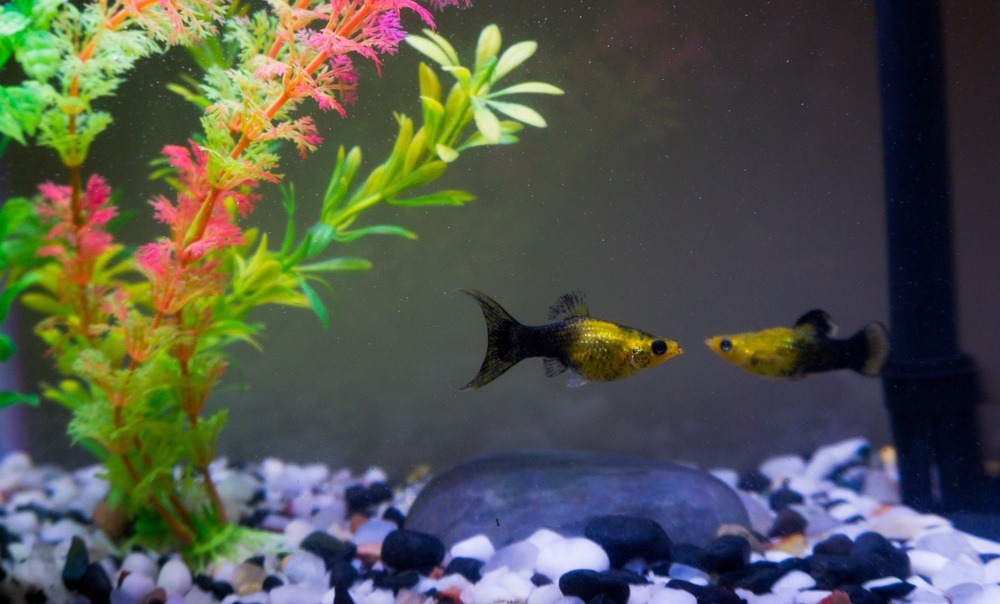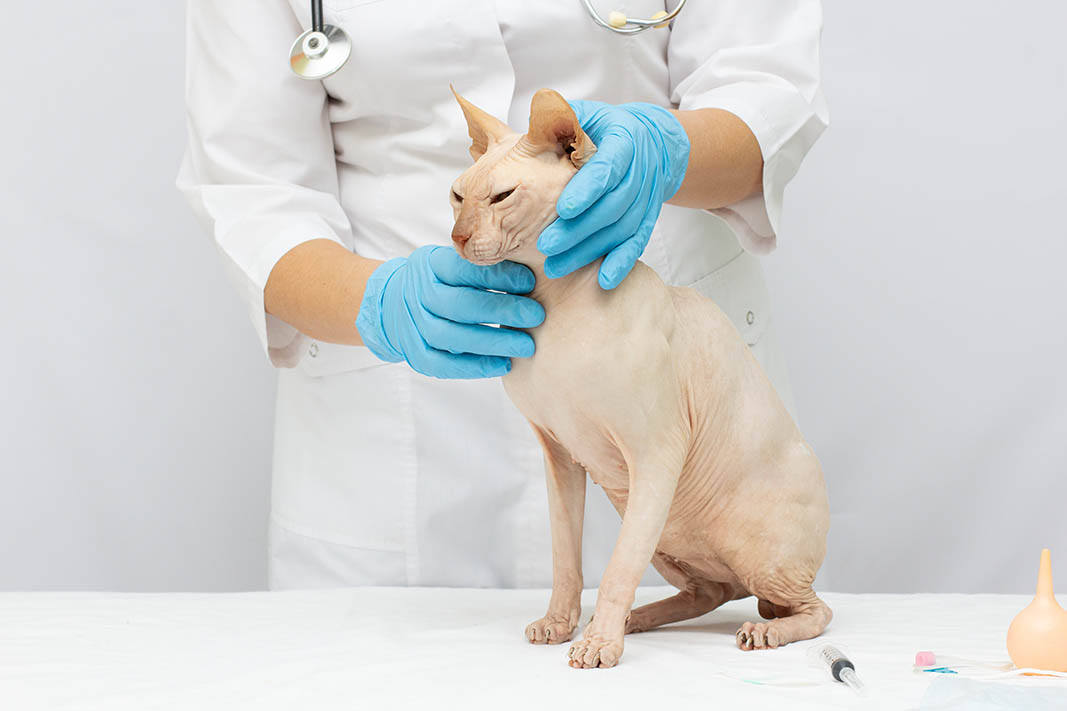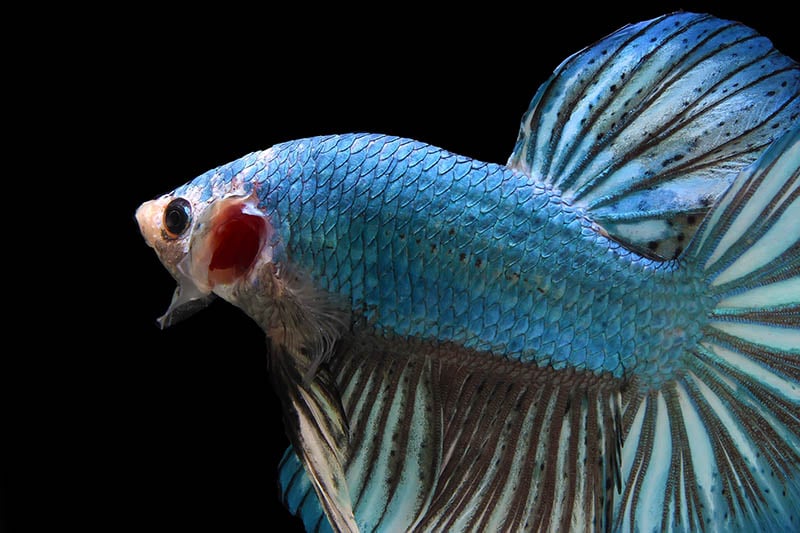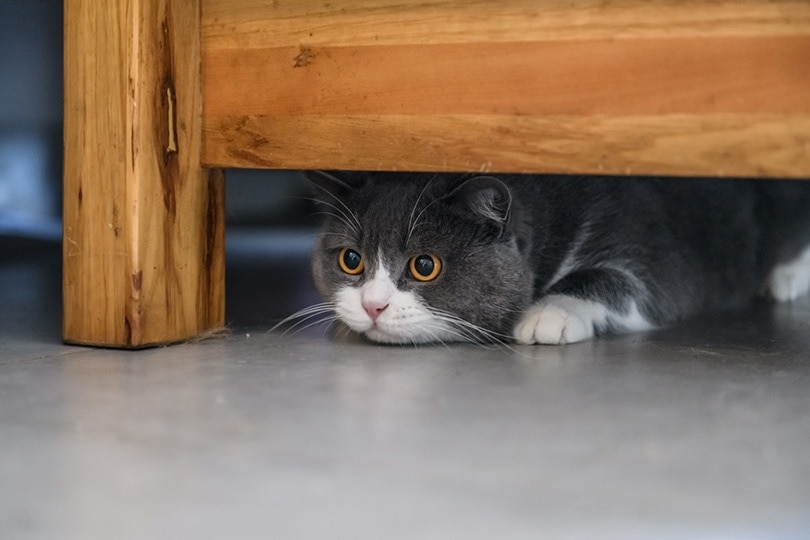11 Types of Tetra Fish & Breeding Information (With Pictures)
Updated on
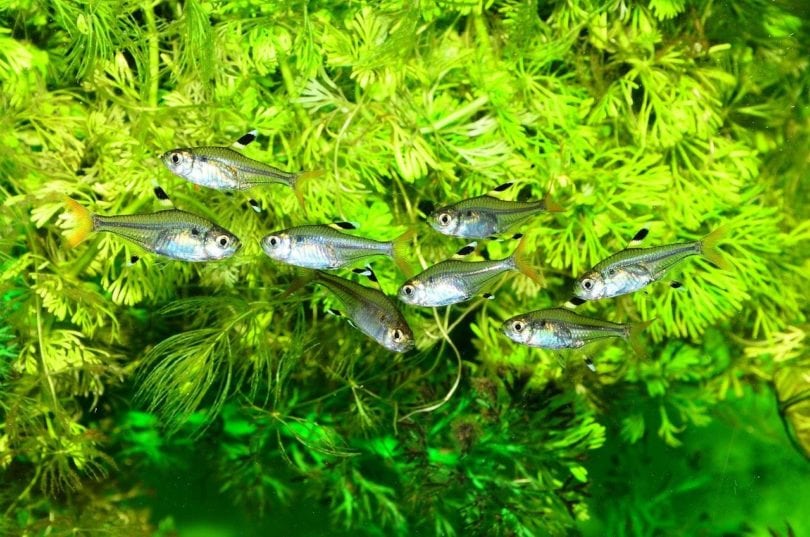
Tetras are one of the most common schooling fish in the aquarium hobby, and they are kept as pets around the world. They are available in a variety of different colors, sizes, and fin types that contribute to their popularity in the aquarium hobby.
Tetras belong to the Characidae family, broken into the Alestidae and Lebiasinidae subfamilies. Most tetras have a similar way of being bred, aside from needing a specific pH or temperature that is comfortable for the type of tetra you plan to breed.
There are over 100 different species of tetras, and we will be discussing the most popular tetras in the hobby along with general breeding information on tetras.
The 11 Types of Tetra Fish
1. Neon Tetra
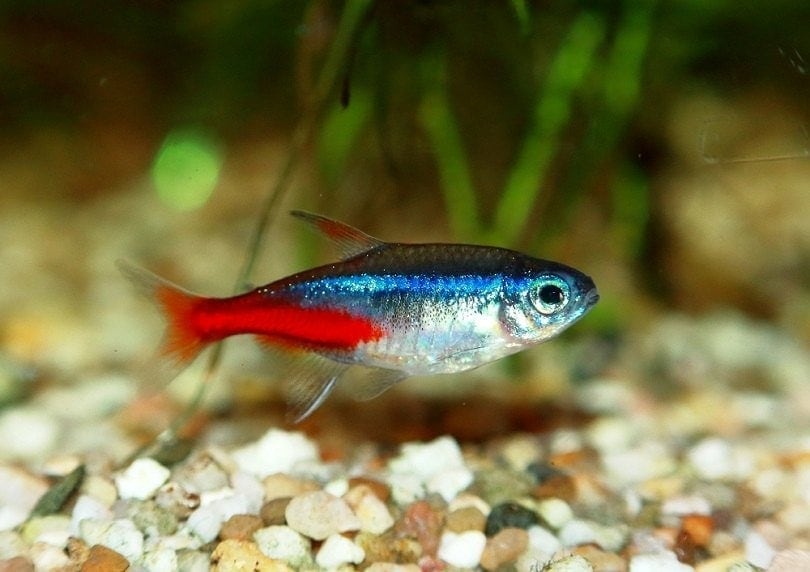
The neon tetra (Paracheirodon innesi) is a type of tropical and freshwater fish that originates from the Amazon river basin in South America. They are by far the most popular tetra in the aquarium hobby and have a bright iridescent body and reach around 1.5 inches in size.
Neon tetras can be identified by an iridescent blue stripe that runs along their bodies, followed by a thicker red stripe that stops about halfway to their head. The colors will brighten during the day when the fish is exposed to light and become dull in the dark to prevent being seen by predators.
These fish are ideal for a variety of aquariums starting from a minimum of 10 gallons, and they make excellent nano fish. Neon tetras should be kept in a group of six or more, as they prefer to swim in schools and can get stressed by themselves.
2. Black Skirt Tetra

The black skirt tetra (Gymnocorymbus ternetzi) is a freshwater tetra that is native to South America in the Pantanal regions of south-central Brazil. These tetras have a disc-like shape with a dull creamy grey body with black smudges. The black skirt tetra has a distinctive anal fin with faint black bands near their heads and they reach around 2 to 2.5 inches in size.
Like most tetras, the black skirt tetra should be kept in a school of six or more while being kept in an aquarium larger than 15 gallons in size. The aquarium should have a heater as they are tropical fish, along with plants to provide them with a place to hide.
3. Congo Tetra
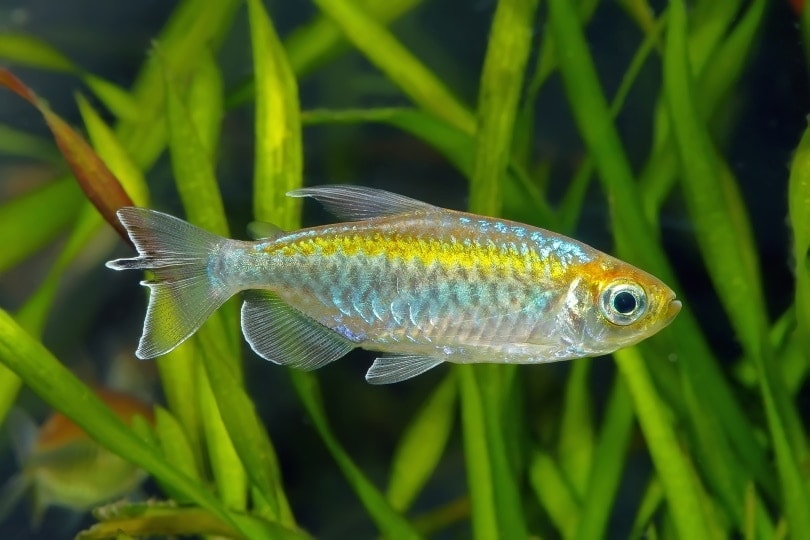
The Congo tetra (Phenacogrammus interruptus) can be found in the Congo river basin located in Africa, and these are attractive-looking and colorful tetras that have a variety of rainbow colors on their bodies. Their typical adult size is around 3 to 3.5 inches, making them larger than other types of tetras.
Congo tetras have long flowing fins and an orange patch on their back, with a silver line dividing the patch from an iridescent blue color. Their colorful bodies catch the light and look stunning in aquariums.
They are tropical fish that need a heater, along with a minimum tank size of 20 gallons. The Congo tetra should be kept in pairs of six to eight since they are social fish that need to be kept in a school.
4. Serpae Tetra
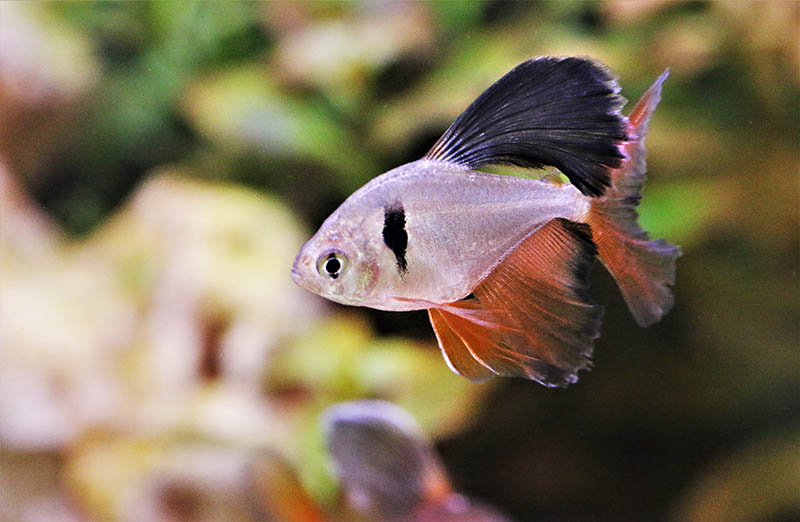
The serpae tetra (Hyphessobrycon eques) is a tropical and freshwater tetra that is native to the Amazon river drainage systems in Peru, Argentina, Paraguay, and Brazil. Serpae tetras have a reddish-orange color, with black patches on their top and bottom fins.
In some cases, the black may be present on their tail fins or in smudges across their bodies. They only grow up to 1.5 inches, therefore only need a minimum tank size of 10 to 15 gallons.
This type of tetra is considered quite peaceful and often described as shy. If they are kept in small groups or pairs, they may even become stressed and begin hiding more often. You should ideally keep serpae tetras in a group of six or eight, with larger numbers being ideal depending on the size of the aquarium.
5. Bloodfin Tetra
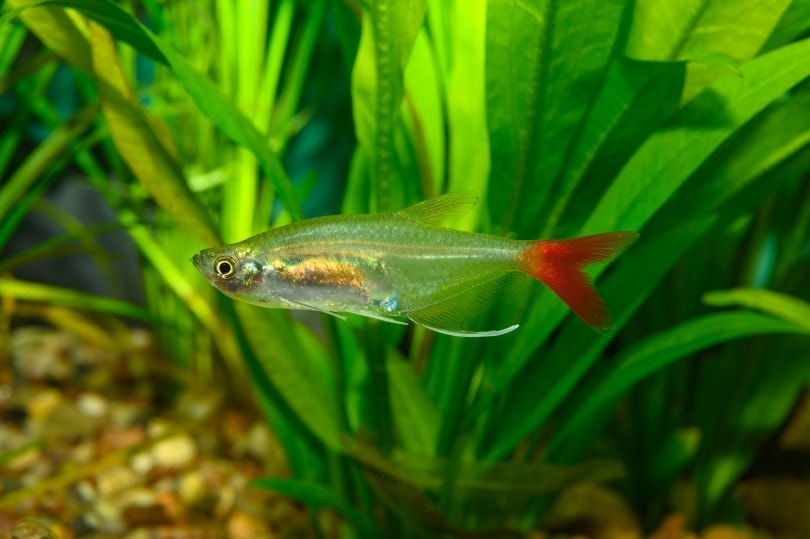
Also known as the glass or redfin tetra, bloodfin tetras (Aphyocharax anisitsi) are striking freshwater fish with a distinctive red finnage and a luminescent silverish body. They are native to the Amazon river basin in South America, and they can be found in Peru and Colombia. These peaceful tetras are commonly kept in community aquariums and they keep to themselves rather than bully tank mates.
The bloodfin tetra reaches a size of 2 inches as an adult, and they require a minimum tank size of 15 gallons. You should aim to keep bloodfin tetras in a group of eight, but you can keep them in a group as small as six.
They are tropical fish, so a heater is necessary for their aquarium. Bloodfin tetras may lose their coloring when exposed to cooler temperatures, so a heater can bring out their vibrant coloration.
6. Silvertip Tetra

The silvertip tetra (Hasemania Nana) is a relatively small tetra growing to around 1.2 to 2 inches in size. They originate from Brazil where they can be found in creeks and streams in the Sao Francisco basin. In comparison to other types of tetras, the silvertip tetra can be semi-aggressive and nip at the fins of other fish, but they are generally peaceful when kept in large groups.
A group of eight will suffice for this tetra, and you should notice that the aggression decreases. Silvertip tetras need a minimum tank size of 15 gallons with a heater and filter inside. You may notice that silvertip tetras can be quite shy depending on how safe they feel in an aquarium.
7. Ember Tetra
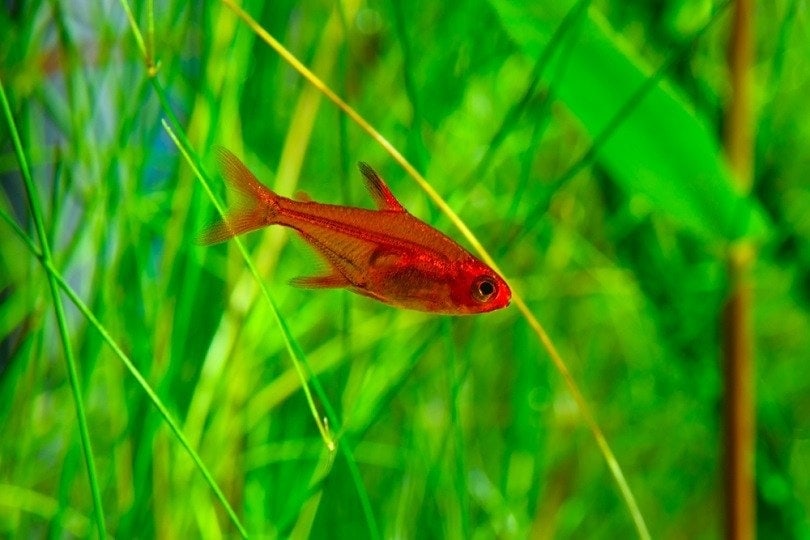
As the name suggests, the ember tetra (Hyphessobrycon amandae) is a bright reddish-orange color that looks spectacular in contrast to living aquarium plants and black substrate. These fish seem to glow under artificial aquarium lighting, making for a great tetra to view.
Ember tetras reach an adult size of only an inch, making them the smallest member of the tetra family. These tetras are native to Brazil in the Araguaia river basin and tributaries in Central Brazil. Ember tetras should be kept in groups of six or more, and their small size makes them suitable for an aquarium as small as 10 gallons in size.
As a tropical fish, the ember tetra needs a heater and a more acidic pH of around 5.0 to 6.5. In comparison to other types of tetras, the ember tetra is considered one of the lower-maintenance and beginner-friendly tetras that you can keep.
Since ember tetras are so small, it may be easier to keep them in groups of eight to 10, as this will allow you to see them clearer and observe their fascinating schooling behavior.
8. Lemon Tetra

Lemon tetras (Hyphessobrycon pulchripinnis) are a type of tropical freshwater tetra that has a deep, disc-shaped body. They originate from South America in Brazil where they inhabit the Tapajos and Xingu river basins.
These tetras have a silver, yellow, and blue body that gives them a luminescent appearance. Some lemon tetras have more yellow on their body and not only on their fins. Lemon tetras usually have a red ring around their eye, which looks striking with the bright yellow or lemon coloration on their fins.
In terms of size, lemon tetras grow to around 2 inches in length and they are quite small. Their minimum tank size is around 15 gallons in size, and like other tetras, they require a heater and filter.
9. Diamond Tetra
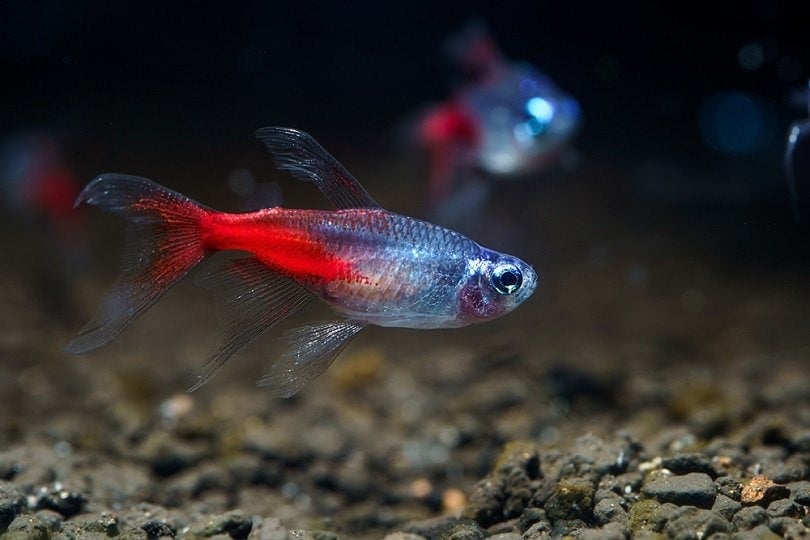
Diamond tetras (Moenkhausia pittieri) are interesting fish that originate from South America in the slow-moving tributaries such as Rio Tiquiriti and Lake Valencia. They are tropical tetras that reach a size of 2 to 2.5 inches as an adult. Diamond tetras have a distinctive silverish body that shines in the light. This silver color can also have a yellow or blue hue.
Their most distinctive feature is a red line above their eye, and medium to long fins depending on the type of diamond tetra. Diamond tetras need a minimum tank size of 20 inches for a group of six, and the tank size should be increased if you plan to add more or keep them in a community aquarium.
Diamond tetras require a heater and freshwater conditions. The male diamond tetra is usually bigger than the female, and they typically have longer fins and much more vibrant colors.
10. Bleeding Heart Tetra
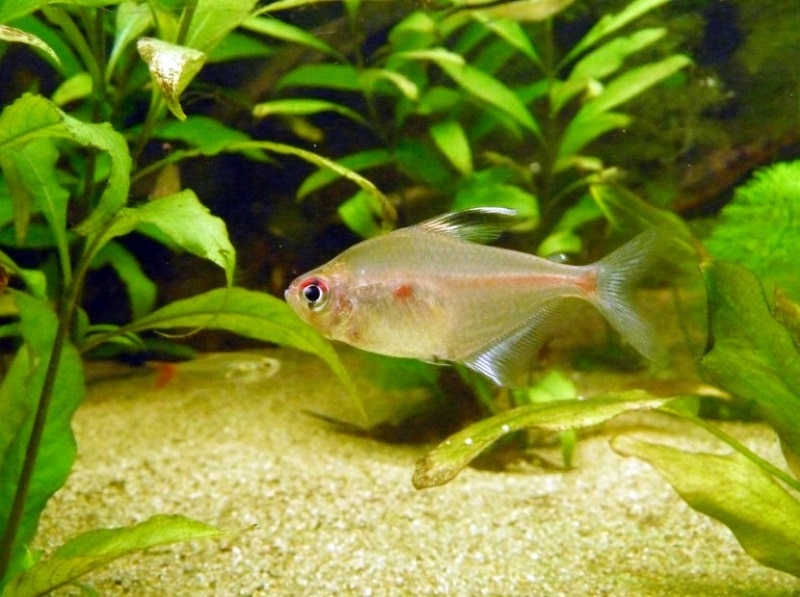
Bleeding heart tetras (Hyphessobrycon erythrostigma) are one of the more interesting species of tetra. This beginner-friendly tetra originates from the upper part of the Amazon river basin, and they reach a size of 2.5 to 3 inches, making them a bigger type of tetra.
These tetras have a creamy brown coloration on their bodies and flowing fins. The male bleeding heart tetra has longer fins that flow in the water. Bleeding heart tetras have a bright red circle in the middle of their bodies, which is why they have the name “bleeding” heart tetra. In some cases, a red line is visible from the start of the red dot to the base of the tail.
Their refractive bodies look attractive in aquariums, and they should ideally be kept in groups of six or more. Since the bleeding heart tetra is on the larger side, they need a minimum of 25 gallons of water in their aquarium.
11. Rummynose Tetra
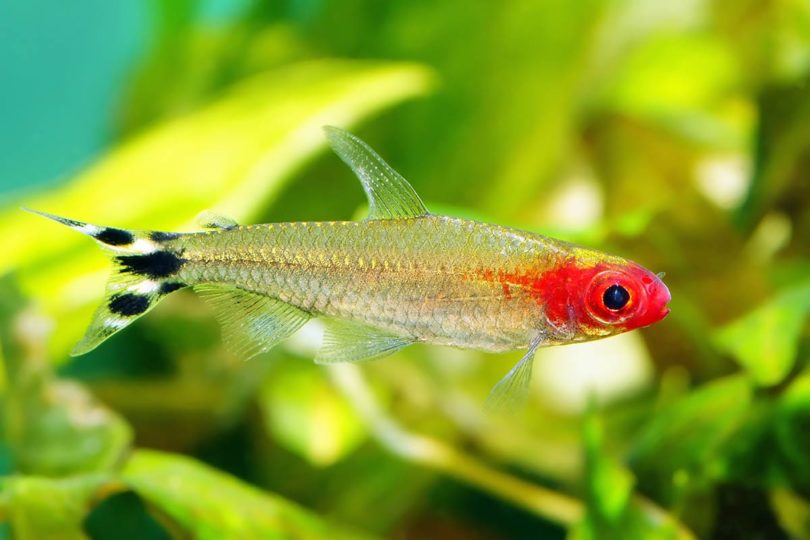
The popular true rummynose tetra (Hemigrammus rhodostomus) is a type of tetra with an elongated body and pointed fins. They have distinctive red faces, hence their name. The rest of their body is a silverish color with a blue hue.
The rummynose tetra can be found in South America where they inhabit the Amazon river basin. They are medium-sized tetras typically reaching 1.5 to 2.5 inches in size, making them ideal for a 20-gallon long tank.
However, if provided a spacious aquarium, a healthy diet, and proper water conditions, some rummynose tetras can grow slightly larger than 2.5 inches.
Rummynose tetras are social fish, so it is recommended to keep them in a group of six or more, with 8 being ideal. They need a heated aquarium to replicate the tropical conditions they experience in the wild, along with a neutral pH of 5.5 to 7.0.
 How to Breed Tetras
How to Breed Tetras
Most of the common tetra species kept in captivity have similar breeding habits and requirements. It is best to separate tetras into a breeding tank around 10 gallons in size that are set up with the ideal breeding conditions for the species. Gradually adjusting the pH and temperature can mimic the changes that tetras would experience in the wild during the breeding season.
It is important to keep the tanks clean with a filter and frequent water changes, as this will make a more pleasant environment for tetras to breed in. Tetras are egg layers, and they will drop their eggs to the bottom of the aquarium where they will fall onto plants, rocks, wood, and into the substrate.
Using a bare-bottom aquarium in a breeding tank for tetras is much more practical since you get to see the eggs and monitor them without having them blend or be buried into the substrate. Plants or pieces of netting can also be placed in a breeding aquarium, as it protects the eggs and makes the tetras feel more comfortable.
For successful tetra breeding, you can start with a group of three females and two males in the same tank, and they should be easily distinguished from male to female. You should wait until the tetras are at least 12 weeks old before you begin breeding them, but you might have more successful breeding at a later age. Most tetras breed well in clean water and a low-stress environment, so keep this in mind when setting up the breeding tank.
Once the female tetras have spawned and dropped eggs onto the plants, bottom of the tank, or any other decorations, you will need to remove the adults from the breeding tank to prevent them from eating the eggs or the fry. The eggs should have slight water movements and clean conditions to allow them to hatch within a few days.
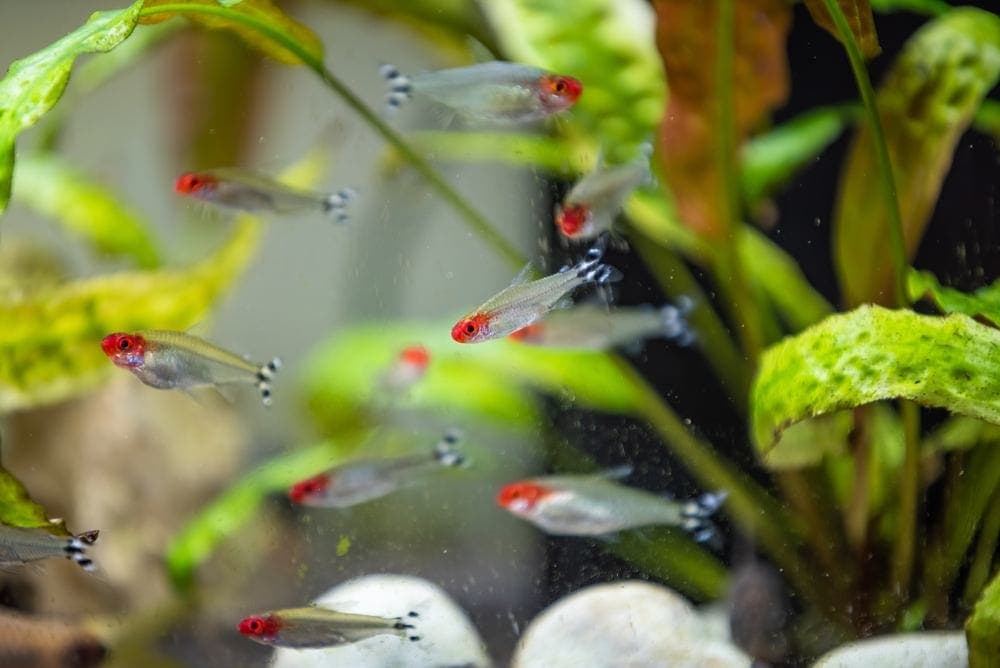
 Final Thoughts
Final Thoughts
Tetras are fairly low-maintenance aquarium fish that thrive in tropical and freshwater aquariums. They are suitable for beginners and their colors look striking in aquariums. When it comes to breeding tetras, you will be able to achieve a successful spawn by creating a comfortable environment in a breeding tank, while ensuring that the temperature and pH are within the ideal range for the species of tetra you have chosen to breed.
Featured Image Credit: Grigorev Mikhail, Shutterstock

 How to Breed Tetras
How to Breed Tetras